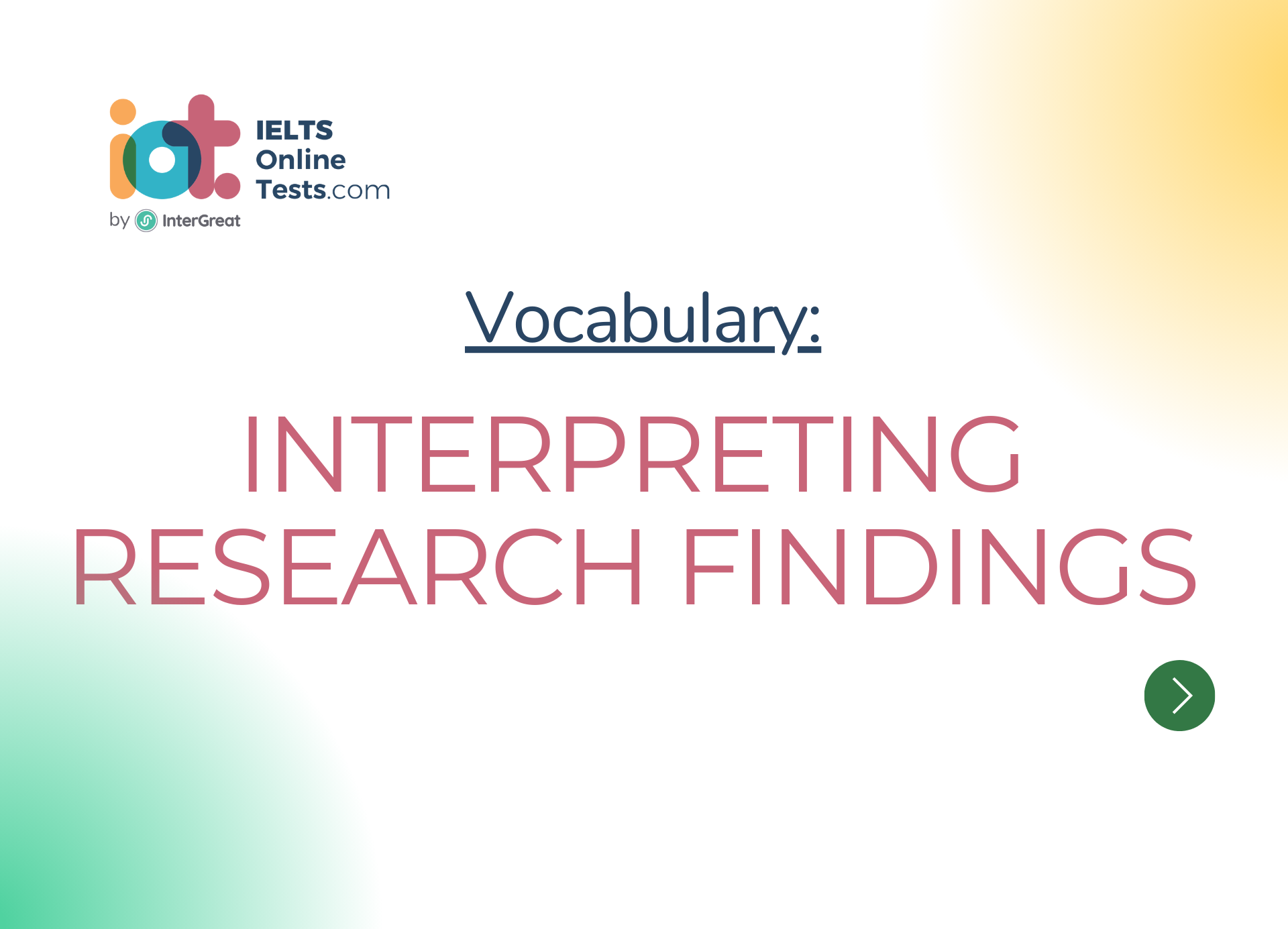
Interpreting research findings
Interpreting research findings is a crucial skill in academic and professional settings. It involves analyzing and understanding the results of research studies, experiments, or surveys, and drawing meaningful conclusions from the data. Here's a comprehensive list of vocabulary related to interpreting research findings suitable for the IELTS band score range of 6.5-8.0:
Data Analysis:
Quantitative Data: Numerical data that can be measured and analyzed using statistical methods.
Qualitative Data: Non-numeric data that is descriptive and often obtained through interviews or observations.
Raw Data: Original, unprocessed data collected during research.
Variables: Factors that can change or be measured in a research study.
Dependent Variable: The variable being measured and affected during the study.
Independent Variable: The variable that researchers manipulate to observe its effect on the dependent variable.
Control Group: A group in an experiment that is not exposed to the independent variable for comparison.
Sample Size: The number of participants or data points in a study.
Statistical Terms:
Mean: The average value of a set of numbers.
Median: The middle value in a set of numbers when arranged in order.
Mode: The most frequently occurring value in a set of numbers.
Standard Deviation: A measure of the dispersion or spread of data points around the mean.
Correlation: A statistical measure that indicates the relationship between two variables.
Regression Analysis: A statistical method that explores the relationship between variables.
Research Results:
Findings: The results and outcomes of a research study.
Patterns: Trends or recurring characteristics observed in the data.
Relationships: Connections or associations between variables.
Trends: General directions or tendencies in the data.
Implications: Possible consequences or applications of the findings.
Validity and Reliability:
Validity: The accuracy and soundness of research findings.
Internal Validity: The extent to which the study accurately measures the intended variables.
External Validity: The generalizability of the study's findings to other populations or situations.
Reliability: The consistency and stability of the research results over time and across different conditions.
Drawing Conclusions:
Inference: A conclusion reached based on evidence and reasoning.
Generalization: Extending research findings to a larger population.
Causation: The relationship between cause and effect.
Research Limitations:
Confounding Variables: Factors that interfere with the relationship between the independent and dependent variables.
Sample Bias: The tendency of a sample to be unrepresentative of the larger population.
Ethical Considerations: Moral principles and guidelines followed during the research.
Discussion and Interpretation:
Significance: The importance or relevance of research findings.
Interpretation: Analyzing and explaining the meaning of the results.
Contradictory Findings: Conflicting results that require further investigation.
Critical Evaluation:
Strengths: Positive aspects of the research design and findings.
Limitations: Weaknesses or constraints of the research.
Reproducibility: The ability of other researchers to replicate the study and obtain similar results.
Graphs and Charts:
Bar Chart: A graph that represents data with rectangular bars of varying lengths.
Line Graph: A graph that displays data as a series of data points connected by straight lines.
Pie Chart: A circular chart that illustrates the proportion of different components in a whole.
Scatter Plot: A graph that shows the relationship between two variables with individual data points.
Reporting Research:
Research Paper: A formal document presenting the research study, findings, and analysis.
Abstract: A concise summary of the research study.
Conclusion: The final section of a research paper summarizing the key findings and implications.
By familiarizing yourself with these vocabulary words, you can better understand and discuss research findings and conclusions. Practice using them in your academic writing and speaking to enhance your ability to communicate effectively in research-related contexts. Good luck on your journey to achieving a higher IELTS band score!




